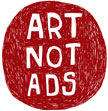Hit Parade (Ryogoku, Tokyo)
The Japanese are great readers. It's wonderful in be in a country where everyone is literate, there is a bookstore on every corner (nearly) and so much to read, so easily accessible. I think there must be more magazines published here than anywhere else.
A lot of it is fluff, of course.
I went to the Edo-Tokyo Museum yesterday. Fun place with a very extensive exhibit of Edo Period artifacts and such. The Edo Period ranged from the 1600's to the 1800's and tt was interesting to see how even as early as the 1600's people loved printed matter. And it was not at all high-brow. One of the most popular items were "rankings." These were single sheets with "hit charts" of everything from popular poets to meals. You still see them in magazines today. "The Top 10 Curry Houses" "The Best Resort Hotels" etc., etc. so it was funny seeing "The Best Grilled Eel Restaurants," "The Wealthiest Merchants," "Best Kabuki Actors" and so on from the Edo Period.
Why did they love these banzuke so much? Is it a reflection of the hierarchical nature of Japanese society?
A lot of it is fluff, of course.
I went to the Edo-Tokyo Museum yesterday. Fun place with a very extensive exhibit of Edo Period artifacts and such. The Edo Period ranged from the 1600's to the 1800's and tt was interesting to see how even as early as the 1600's people loved printed matter. And it was not at all high-brow. One of the most popular items were "rankings." These were single sheets with "hit charts" of everything from popular poets to meals. You still see them in magazines today. "The Top 10 Curry Houses" "The Best Resort Hotels" etc., etc. so it was funny seeing "The Best Grilled Eel Restaurants," "The Wealthiest Merchants," "Best Kabuki Actors" and so on from the Edo Period.
Why did they love these banzuke so much? Is it a reflection of the hierarchical nature of Japanese society?



0 Comments:
Post a Comment
<< Home